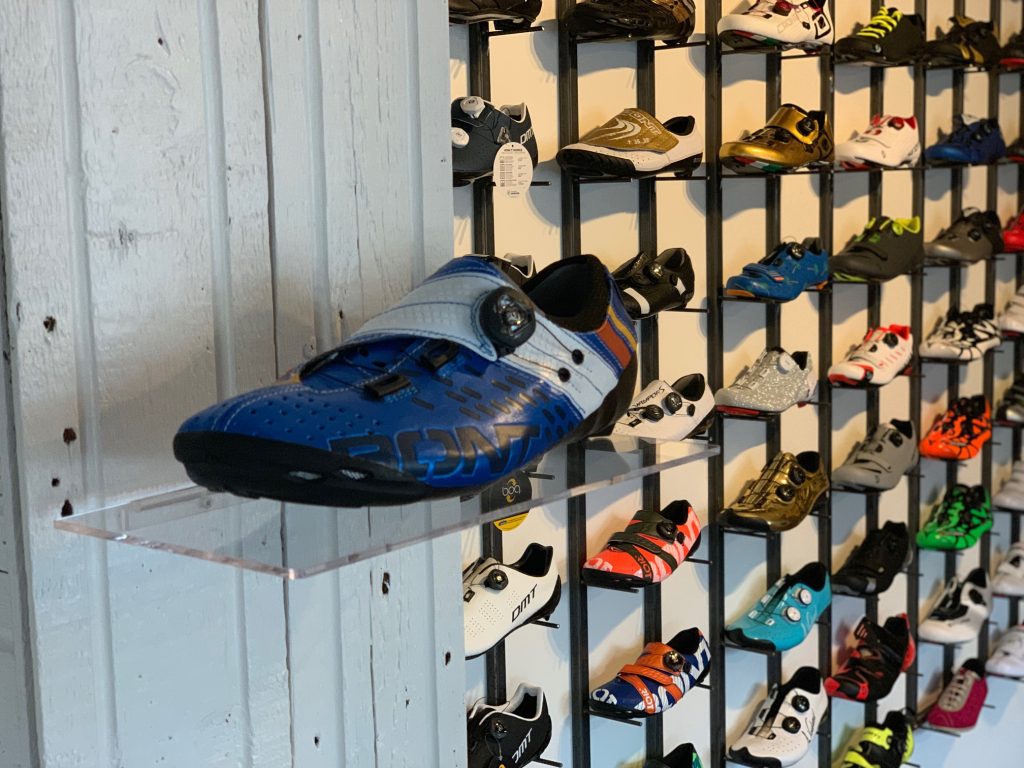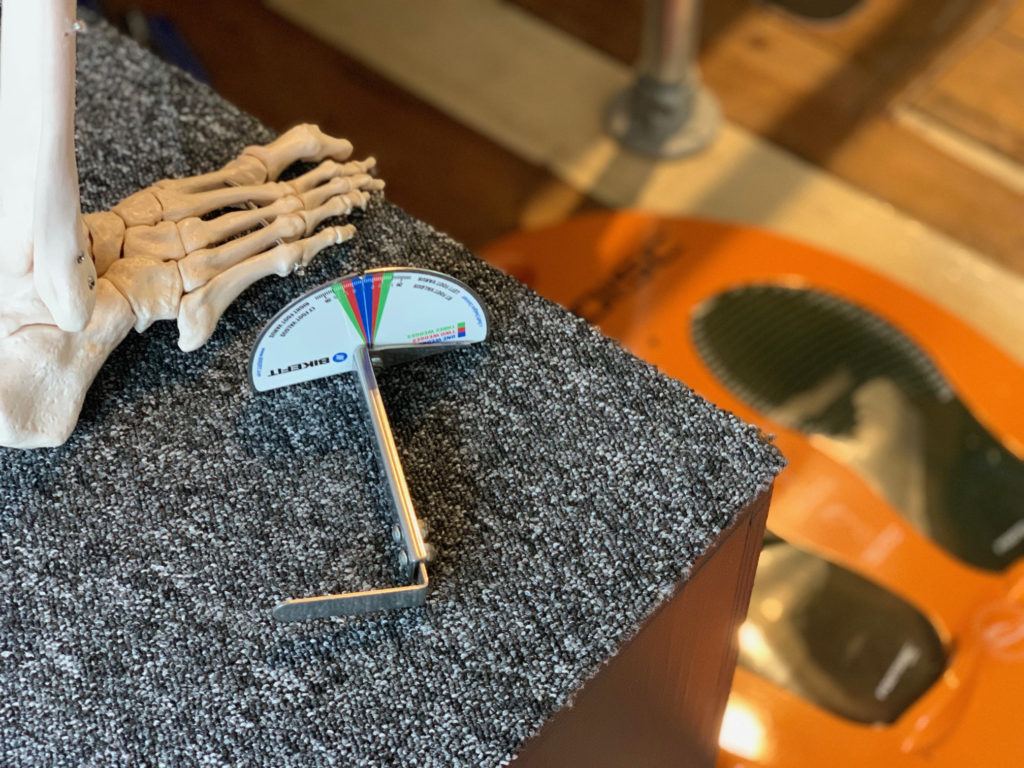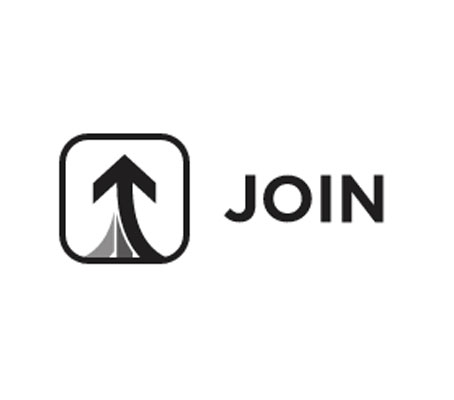The importance of a shoe measurement
Shoes are all too often bought based on feeling or colour. But a poorly fitting shoe can be beautiful, it affects performance and can cause annoying complaints. Enough reason to pay attention to a shoe measurement.

Even before owning Bikeshoe4u, Daan Kruithof, opens its doors to the public, I enter his shop in Nijkerk. A wall full of shoes of all kinds of different brands is unmissable. “The variety of brands actually ensures the customization. I can let people try on almost all types of shoes,” says Daan. According to Daan, complaint-free cycling always starts with the basics, the shoe.
Importance of shoe measurement
“The shoe is the only point with which the cyclist is attached to his bike. If the cleats are not adjusted properly, or the shoe is too loose or too tight, then this affects the entire posture on the bike. With all kinds of pain complaints as a possible result. The most common complaints are burning, tingling or cold feet due to poor blood circulation in the feet. But also think of Achilles tendon, knee and hip complaints,” says Daan. “Once the shoe measurement is finished, I continue with determining the position of the saddle and the handlebars.”
In addition to pain-free cycling with the right shoes, the right shoe also ensures better performance. “An incorrect position of the cleats ensures that less power is transferred to the pedals. Even if you have no complaints, it is a shame not to cycle efficiently,” says the specialist.

The type of foot and the position of the foot are very important when choosing a shoe.
Measuring the foot
On a plate that takes over the heat of your foot, it can be determined whether you have a hollow, flat or sagging foot. Then the foot itself is measured. The length of the foot is determined. Daan: "Generally speaking, if you have size 44 of normal shoes, you will end up with size 45 for a cycling shoe." But the width is also important. "I regularly come across people who squeeze their feet into shoes that are too narrow. The importance of the width is often underestimated," Daan continues. According to Daan, this is also the major problem on the shoe market: "There are too few wide shoes on the market."
Position of the foot
Step two in the process of finding the right shoe is determining the position of the foot. Does the foot tilt inwards or outwards (Varus-Valgus). Some brands already take into account the most common tilting of the foot and have adjusted their insoles accordingly. Daan: “I am not saying that what the different brands do is right or wrong, but you do need to know. The shoe is good, just maybe not for you. That is my message anyway, all shoes are actually good, but they just have to fit you.”

Proper cleat adjustment ensures greater pedaling efficiency.
Choosing the shoe
Now begins the most fun part of the search, trying on shoes. After the measurement, an image of the right shoe is created. For an average or narrow foot, the choice is quite large. It is therefore absolutely not necessary to have a shoe made completely to measure for approximately 1,100 euros. The main thing now is to try on shoes with the shoe measurement as a reference point. Daan: “If I don't have the shoe, I can also order shoes that I don't have in my collection. I also know what I don't sell. We also offer a solution for people who have a different size on the left than on the right. I then have the manufacturer make a pair of shoes in different sizes.”
Ultimately, there is a right shoe for every foot.
Also read: How important is an effort test?














